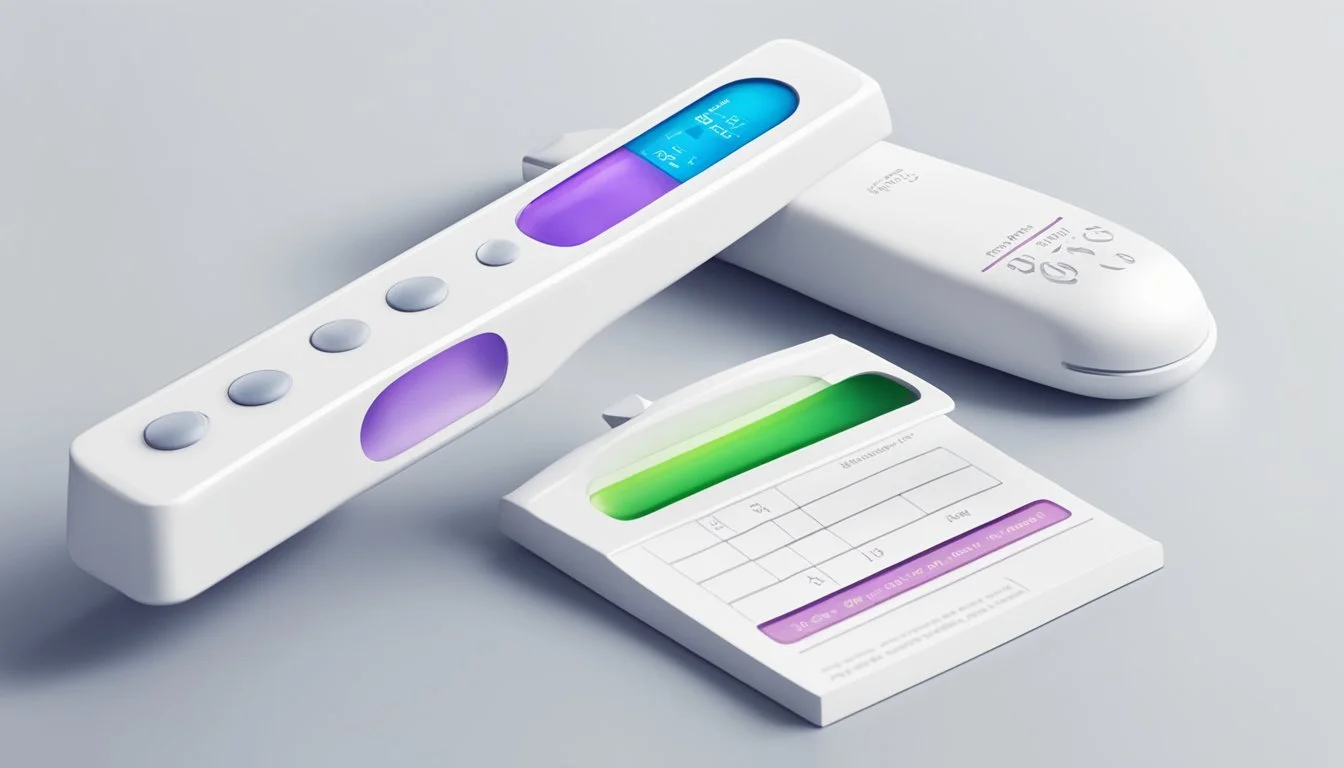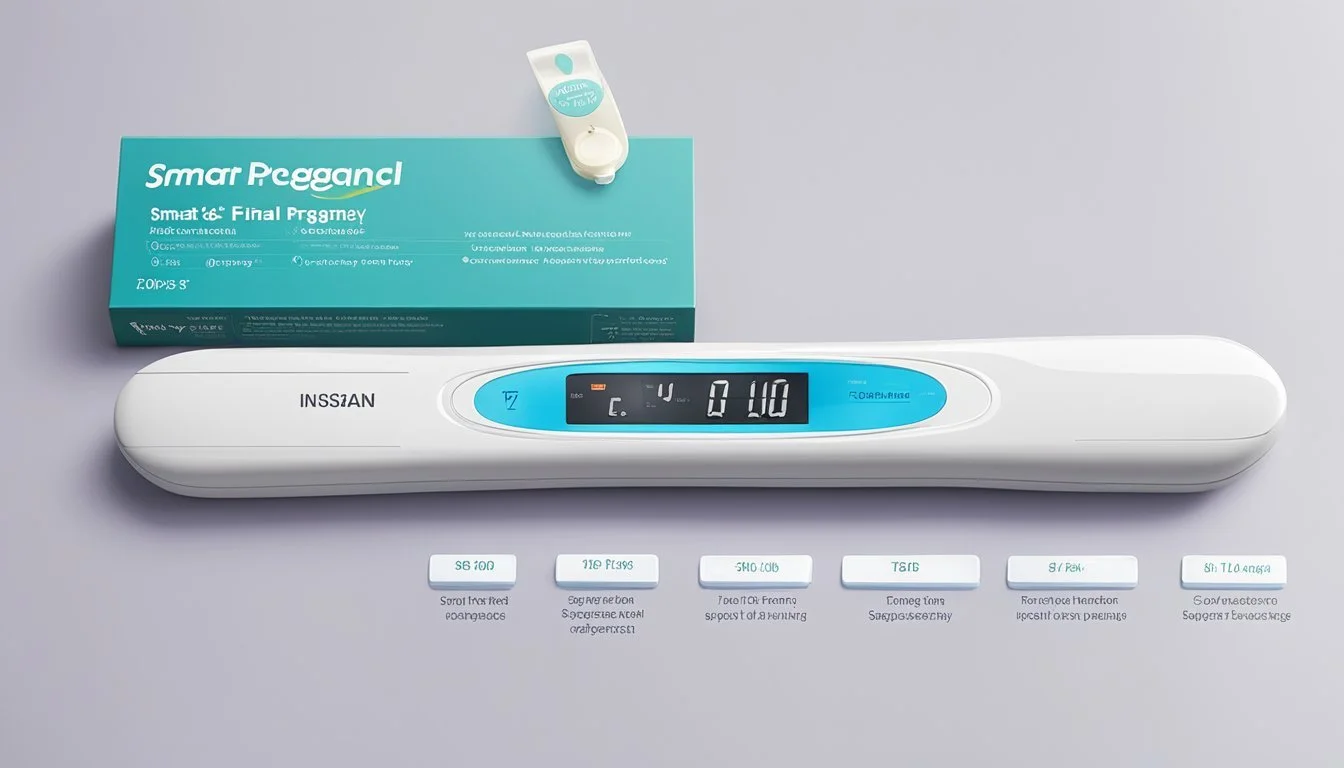Smart & Final Pregnancy Test
Affordable and Reliable Option for Early Detection
Pregnancy tests have come a long way in recent years, offering increasingly sensitive and user-friendly options for women seeking to confirm a potential pregnancy. While Smart & Final is primarily known as a warehouse-style grocery store, they do carry some health and personal care items. However, Smart & Final does not produce its own branded pregnancy tests.
For those looking for reliable pregnancy tests, several well-known brands are widely available at pharmacies, grocery stores, and online retailers. The most accurate and sensitive pregnancy tests can detect pregnancy hormones as early as 6 days before a missed period, with accuracy rates of over 99% when used correctly. These advanced tests often feature digital displays or early detection capabilities, making them popular choices among women eager for clear results.
When selecting a pregnancy test, factors to consider include sensitivity, ease of use, and price. Some tests offer features like wide absorbent tips for easier sample collection or ergonomic handles for better grip. Digital tests may appeal to those who prefer straightforward "pregnant" or "not pregnant" results, eliminating the need to interpret lines.
Understanding Pregnancy Tests
Pregnancy tests are essential tools for detecting early pregnancy. They work by identifying specific hormones in the body that increase during pregnancy. Accuracy and timing are crucial factors when using these tests.
Types of Pregnancy Tests
Urine tests and blood tests are the two main types of pregnancy tests. Urine tests, commonly known as home pregnancy tests, are widely available over-the-counter. They offer privacy and quick results. Blood tests are performed at medical facilities and can detect pregnancy earlier than urine tests.
Home pregnancy tests have an accuracy rate of around 97% when used correctly. They are affordable, ranging from $8 to $20. First Response is a popular brand known for detecting pregnancy hormones up to six days before a missed period.
How Pregnancy Tests Work
Pregnancy tests detect human chorionic gonadotropin (hCG), a hormone produced after a fertilized egg attaches to the uterus. Urine tests use test strips or sticks that react with hCG. When urine containing hCG comes into contact with the test, it triggers a color change or displays a symbol.
For accurate results, it's best to take the test first thing in the morning when urine is most concentrated. Avoiding excessive fluid intake before testing helps prevent diluted results.
Key Hormones in Pregnancy Detection
Human chorionic gonadotropin (hCG) is the primary hormone detected by pregnancy tests. It's produced by cells that form the placenta. hCG levels start to rise rapidly about 6-10 days after conception.
hCG doubles every few days during early pregnancy. This rapid increase allows tests to detect pregnancy earlier. Some highly sensitive tests can detect hCG as early as 10 days after conception.
Blood tests can measure exact hCG levels, while urine tests typically provide a yes/no result based on a threshold hCG level.
Shopping for Home Pregnancy Tests
Choosing a home pregnancy test involves considering various brands, features, and price points. The right test can provide accurate results quickly and easily.
Brands and Varieties
Clearblue and First Response are leading brands in the pregnancy test market. Clearblue offers digital tests with smart countdown features, providing clear results. First Response is known for its early detection capabilities.
Pregmate and Natalist offer more affordable options, often in bulk packs of test strips. These can be cost-effective for frequent testing.
Smart & Final pregnancy tests are less common but may be available in some stores. They typically offer basic functionality at a lower price point.
Factors to Consider When Purchasing
Sensitivity is crucial when selecting a pregnancy test. Higher sensitivity tests can detect pregnancy earlier, sometimes up to 5 days before a missed period.
Ease of use varies between tests. Digital tests often provide clearer results but may be more expensive. Traditional line tests are generally more affordable but require careful interpretation.
Accuracy is essential. Most home tests claim over 99% accuracy when used correctly. Following instructions precisely is key to obtaining reliable results.
Cost Comparison
Pregnancy test prices vary widely. Digital tests from brands like Clearblue can cost $10-$20 for a two-pack. First Response early result tests are similarly priced.
Bulk packs of test strips from brands like Pregmate can offer significant savings, with prices as low as $0.30-$0.50 per test.
Store brand tests, including those from Smart & Final, typically cost less than premium brands. Prices range from $5-$10 for multi-packs.
Consider how frequently you plan to test when evaluating cost. Bulk purchases may be more economical for regular testing.
Interpreting Results
Properly interpreting pregnancy test results is crucial for accurate family planning. Understanding positive and negative outcomes, test accuracy, and potential factors affecting results helps avoid confusion.
Positive and Negative Results
A positive result typically appears as two lines, a plus sign, or the word "Pregnant" on digital tests. This indicates the presence of human chorionic gonadotropin (hCG) in urine. A single line or "Not Pregnant" display signifies a negative result.
Early result tests can detect pregnancy 5-6 days before a missed period. However, testing too early may lead to false negatives. For most accurate results, wait until after a missed period.
Digital tests provide clear "Pregnant" or "Not Pregnant" readouts, reducing interpretation errors. Traditional line tests require careful observation within the specified timeframe.
Understanding Test Accuracy
Most home pregnancy tests claim over 99% accuracy when used correctly. This high accuracy rate applies to tests taken on or after the first day of a missed period. Early result tests may be less reliable.
Factors affecting accuracy include:
Timing of the test
Proper test administration
Test sensitivity to hCG levels
Medication interactions
Following instructions precisely helps ensure accurate results. Testing first thing in the morning, when urine is most concentrated, can improve detection of early pregnancies.
Common Causes of False Results
False negatives can occur from:
Testing too early
Diluted urine samples
Low hCG levels in early pregnancy
Improper test usage
False positives are less common but may result from:
Certain medications containing hCG
Recent miscarriage or abortion
Some rare medical conditions
Chemical pregnancies
Evaporation lines on line tests can be mistaken for faint positives. Always read results within the specified timeframe to avoid this confusion. If uncertain, repeat the test in a few days or consult a healthcare provider for confirmation.
Best Practices for Pregnancy Testing
Accurate pregnancy testing involves proper timing, technique, and interpretation. Following established best practices helps ensure reliable results and minimizes confusion.
When to Take a Test
The optimal time to take a pregnancy test is after a missed period. This allows hCG levels to rise sufficiently for detection. For those eager to test earlier, some sensitive tests can detect pregnancy 5-6 days before an expected period.
First morning urine typically contains the highest hCG concentration. Testing too early may yield false negatives. If the initial result is negative but pregnancy is still suspected, retest in a few days.
How to Take a Test
Read all instructions carefully before beginning. Collect urine in a clean container or test directly in the urine stream, depending on the test type. Avoid excess fluid intake before testing, as this can dilute hCG levels.
Place the absorbent tip in urine for the specified time, usually 5-10 seconds. Lay the test flat while waiting for results. Most tests display results within 3-5 minutes.
Digital tests often show a countdown timer and clear "Pregnant" or "Not Pregnant" result. For line tests, any visible second line indicates pregnancy, even if faint.
Understanding Early Testing
Early result pregnancy tests are highly sensitive, detecting low hCG levels. First Response Early Result can detect pregnancy up to 6 days before a missed period. Clearblue Early Detection offers similar sensitivity.
Early testing carries a higher risk of false negatives. hCG levels double every 48-72 hours in early pregnancy, so retesting after a few days may yield different results.
Some women experience very early miscarriages, known as chemical pregnancies. These may only be detectable through early testing before a missed period occurs.
Technological Advances
Pregnancy testing has evolved significantly with digital technologies and smart features. These advancements aim to provide clearer results and reduce user anxiety during the testing process.
Digital Tests and Smart Features
Digital pregnancy tests offer clearer, more definitive results compared to traditional line tests. Many feature a digital display that shows "Pregnant" or "Not Pregnant" instead of lines. This eliminates the need to interpret faint lines or symbols.
Some tests include a progress indicator or countdown timer. These features reassure users the test is working properly. Clearblue's Digital Pregnancy Test with Smart Countdown displays a waiting symbol while processing the sample.
Advanced digital tests can detect pregnancy earlier than traditional tests. They may provide results up to 6 days before a missed period. However, testing too early can increase the risk of false negatives.
Future Innovations in Pregnancy Detection
Researchers are exploring new technologies to further improve pregnancy detection. Smartphone-connected tests are in development, allowing results to be stored and shared digitally.
Artificial intelligence may play a role in analyzing test results. This could potentially reduce false positives and negatives. AI algorithms could also provide personalized insights based on test data.
Wearable devices for continuous hormone monitoring are another area of innovation. These could detect pregnancy even earlier and track hormonal changes throughout gestation.
Factors Affecting Test Results
Several factors can influence the accuracy and reliability of pregnancy test results. These include hormonal fluctuations, underlying medical conditions, and certain medications.
Hormonal Variations and Test Sensitivity
Pregnancy tests detect human chorionic gonadotropin (hCG) in urine. hCG levels vary widely among women and throughout pregnancy. Early in pregnancy, hCG doubles every 48-72 hours.
Test sensitivity matters. Some can detect hCG as low as 10 mIU/mL, while others require 25 mIU/mL or more. First Response and Clearblue Rapid Detection are highly sensitive options.
Timing affects results. Testing too early may lead to false negatives. Waiting until after a missed period increases accuracy.
Chemical pregnancies can cause brief hCG spikes, potentially leading to false positives if testing very early.
Medical Conditions and Pregnancy Test Results
Certain medical conditions can affect pregnancy test outcomes. Ectopic pregnancies may show lower hCG levels, potentially causing false negatives.
Some cancers produce hCG, which could lead to false positives. These include testicular cancer and certain ovarian tumors.
Polycystic ovary syndrome (PCOS) can cause irregular periods and false positives due to elevated hCG-like hormones.
Recent miscarriage may result in lingering hCG, causing false positives for weeks after.
Women with kidney disease may have altered hCG metabolism, potentially affecting test results.
The Impact of Medications
Some medications can influence pregnancy test results. Fertility drugs containing hCG may cause false positives if testing too soon after administration.
Certain medications used to treat Parkinson's disease, such as bromocriptine and levodopa, can lead to false-positive results.
Anticonvulsants and anti-anxiety medications may affect hCG levels or interfere with test accuracy.
Diuretics can dilute urine, potentially leading to false negatives if hCG levels are low.
Always consult with a healthcare provider about potential medication interactions with pregnancy tests. FDA-approved tests are generally reliable, but no test is 100% accurate.
Additional Considerations
Pregnancy tests require careful attention to detail for accurate results. Proper handling and interpretation are essential, as are timing considerations related to ovulation and menstrual cycles.
Reading and Understanding Expiration Dates
Pregnancy test expiration dates are crucial for ensuring reliable results. Check the packaging or individual test wrapper for the printed expiration date. Expired tests may give inaccurate readings due to degraded chemicals. Store tests in a cool, dry place to maintain effectiveness.
Avoid using tests past their expiration, even if only by a few days. Expired tests can lead to false negatives or positives. When purchasing, choose tests with distant expiration dates for future use. Always read the instruction leaflet thoroughly before use, as directions may vary between brands.
The Role of Ovulation Tests in Pregnancy Planning
Ovulation tests detect luteinizing hormone (LH) surges, indicating peak fertility. These tests help pinpoint ovulation, typically 24-36 hours after a positive result. Regular use can reveal patterns in menstrual cycles, aiding in pregnancy planning.
For women with irregular periods, ovulation tests provide valuable insights into fertile windows. Combine ovulation test results with basal body temperature tracking for more comprehensive fertility monitoring. Some tests detect both LH and estrogen levels for enhanced accuracy.
Ovulation tests are not substitutes for pregnancy tests. They serve different purposes in reproductive health. Use ovulation tests to time intercourse for conception, then switch to pregnancy tests after a missed period.







